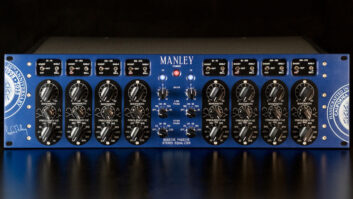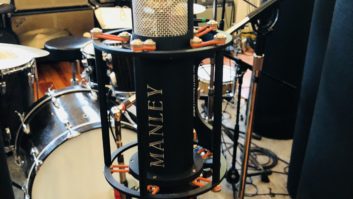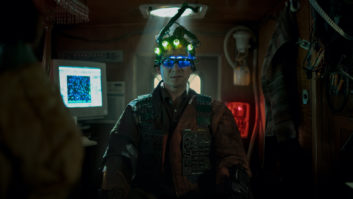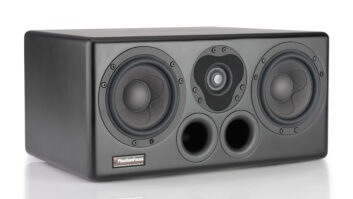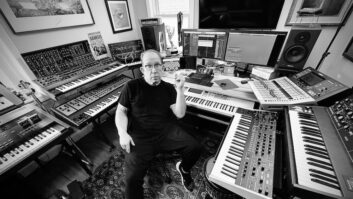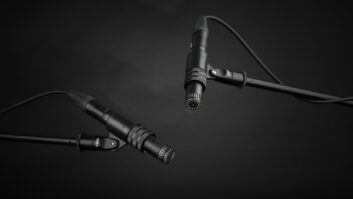Los Angeles, CA—October 2016… Although he earned his first major credits as a keyboard player, Michael Beinhorn really hit his stride producing such artists as Marilyn Manson, Hole, Soundgarden, Korn, and the Red Hot Chili Peppers. Known for innovative solutions to production challenges, Beinhorn seeks tools from manufacturers with a similar philosophy. That’s one reason he has become a big fan of Manley’s Reference Cardioid Tube Microphone.

“So many companies do knockoffs of things that are tried are true but I prefer someone who takes the technology and makes something different with it, something that no-one has made before,” asserts Beinhorn. “The Manley Reference Cardioid is not a knockoff of a classic tube condenser mic; in many ways it doesn’t sound like any other tube mic I’ve heard. It has a very specific tonal entity that makes it a great piece in a recordist’s toolbox.”
Recently, Beinhorn put the Reference Cardioid Tube Microphone through its paces during tracking for Dutch band Kensington’s new album. “I got two Reference Cardioid mics, and we recorded a lot of different things with them. They were especially great on drums. I tend to favor the low end in the drum kit, and I usually have at least one set of microphones in a kind of ambient proximity array, as close to the drum kit as I can get them. It’s not a distinct stereo spread to create an equivalency between the mics; I want an interesting tonal balance. The Manley Reference Cardioids worked great for that. They grabbed a part of the low end of the kit that none of the other mics could get.”
For Beinhorn, the Reference Cardioid provides a distinctive coloration. “It has a really attractive tone; I have to give the designer a lot of credit,” he praises. “It can give you a dark, dense sound that other tube mics don’t. A lot of tube mics have a diffuse sound and give you detail in all the ranges except down low, where there’s a density or murkiness that’s missing for me. Without a really strong tonal characteristic, when you combine other instruments that are in the same tonal range down low—say, bass guitar and kick drum—the instruments don’t establish their own tonal identity. You create a wash in the lows. But when I used the Reference Cardioid microphones for drums and bass, I was able to get a lot of definition out of both instruments and a really good sense of specificity between the instruments. I was really impressed; I liked it a lot!”

Beinhorn had planned to use other microphones on the guitar amps but ended up including the Reference Cardioids. “The guitarist has a little Bad Cat combo, and we made that part of the guitar setup,” he recalls. “We used five mics in front of this little combo amp, and I was still missing bottom. So I put up the Manley microphone as well. Sure enough, it added a really nice weight that I’d been missing, and it blended nicely with the other mics.”
The Reference Cardioid even saved the day at one of the Kensington vocal sessions. “We didn’t expect to use the Manley mics on vocals but we were recording a soft and introspective song, and we couldn’t get the right feel on the vocals,” Beinhorn relates. “Then the vocalist suggested using the Manley mic. He has a lovely, special-sounding voice, and he sounded so beautiful and present when we used the Reference Cardioid that everyone got goosebumps. It was quite breathtaking, and it helped him get a great vocal performance.”
The Manley Reference Cardioid Tube Microphone proved so impressive that Beinhorn would even substitute it at times for legendary vintage mics he usually relies on. “I’ve used some of the best vintage mics in the world, classics that cost tens of thousands of dollars, and in the right scenario I could replace them with the Reference Cardioid,” he insists. “The Manley mic has a very attractive and appealing tonal characteristic that lends itself to recording almost everything. It’s a completely different style of condenser microphone. It’s a great, great microphone.”
